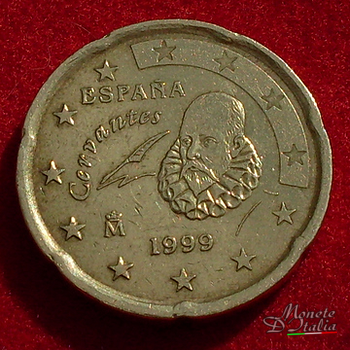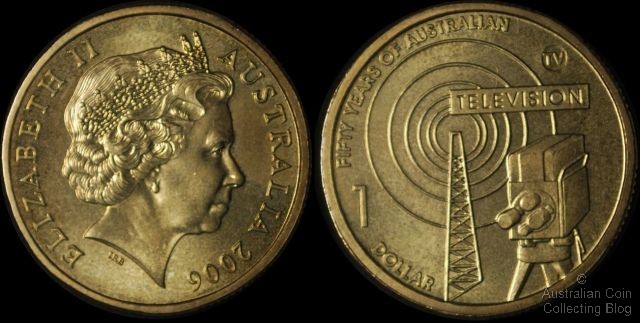10 Euro Cent Coin
The first coin we will be analysing is, of course, the 1 cent Spanish Euro Coins.Specifically, the author of this coin is Garcilano Rollan. There have been four editions of this same coin that date back precisely to the years 1999 to 2009 for the first two series, under King Juan Carlos I. Instead for the third and fourth series in the years 2010 to 2014 under King Juan Carlos I first and from. Images - 10 Euro Cents To help you to identify which country your euro coins are from, we have provided this and a series of similar pages, each showing the obverse (national) side of each a particular coin denomination (value).
10 Euro Cent Coin
Composed of an alloy called Nordic gold.Wikipedia
- 50 euro cent coin
Alloy called nordic gold. All coins have a common reverse side and country-specific national sides.Wikipedia
- 20 euro cent coin
Composed of an alloy called nordic gold in the Spanish flower shape. All coins have a common reverse side and country-specific national sides.Wikipedia
- Nordic Gold
Gold-coloured copper alloy from which many coins are made. Originally developed for, as well as the Polish 2 złote commemorative coins.Wikipedia
- 2 euro cent coin
Composed of copper-plated steel. All coins have a common reverse and country-specific (national) obverse.Wikipedia
- 5 euro cent coin
Composed of copper-covered steel. All coins have a common reverse and country-specific (national) obverse.Wikipedia
- 1 euro cent coin
Composed of copper-covered steel. The coins of every Euro country have a common reverse and each has a country-specific (national) obverse.Wikipedia

- Brass
Alloy of copper and zinc, in proportions which can be varied to achieve varying mechanical and electrical properties. Substitutional alloy: atoms of the two constituents may replace each other within the same crystal structure.Wikipedia
- List of copper alloys
Copper alloys are metal alloys that have copper as their principal component. They have high resistance against corrosion.Wikipedia
- Auricupride
Natural alloy that combines copper and gold. Cu 3 Au.Wikipedia
- Euro gold and silver commemorative coins (Belgium)
Euro gold and silver commemorative coins are special euro coins minted and issued by member states of the Eurozone, mainly in gold and silver, although other precious metals are also used in rare occasions. One of the first twelve countries in the Eurozone that introduced the euro on 1 January 2002.Wikipedia
- Aluminium bronze
Type of bronze in which aluminium is the main alloying metal added to copper, in contrast to standard bronze or brass (copper and zinc). A variety of aluminium bronzes of differing compositions have found industrial use, with most ranging from 5% to 11% aluminium by weight, the remaining mass being copper; other alloying agents such as iron, nickel, manganese, and silicon are also sometimes added to aluminium bronzes.Wikipedia
- Doré bar
Semi-pure alloy of gold and silver. Usually created at the site of a mine and then transported to a refinery for further purification.Wikipedia
- Euro gold and silver commemorative coins (Malta)
Euro gold and silver commemorative coins are special euro coins minted and issued by member states of the Eurozone, mainly in gold and silver, although other metals are also used on rare occasions. Malta introduced the euro (€) on 1 January 2008.Wikipedia
- Euro gold and silver commemorative coins (Finland)
Euro gold and silver commemorative coins are special euro coins minted and issued by member states of the Eurozone, mainly in gold and silver, although other precious metals are also used in rare occasions. One of the first twelve countries in the Eurozone that introduced the euro on 1 January 2002.Wikipedia
- Titanium gold
Alloy consisting of titanium and gold. Such alloys are used in dentistry, ceramics and jewelry.Wikipedia
- Crown gold
22 karat gold alloy used in the crown coin introduced in England in 1526 (by Henry VIII). 22 parts out of 24 — and is appreciably less prone to wear than the softer 23 kt gold of earlier gold sovereigns — an important point for coins intended for everyday use in circulation.Wikipedia
- Guanín
Alloy of copper, gold and silver, similar to red gold, used in pre-Columbian central America. Taken from the language of the Taíno people, who prized it for its reddish color, brilliant shine, and unique smell, and associated it with both worldly and supernatural power.Wikipedia
- List of alloys
List of named alloys grouped alphabetically by base metal. Within these headings, the alloys are also grouped alphabetically.Wikipedia
- Intermetallic
Type of metallic alloy that forms a solid-state compound exhibiting defined stoichiometry and ordered crystal structure. Regretted, for example by Hume-Rothery in 1955.Wikipedia
- Magnesium alloy
Magnesium alloys are mixtures of magnesium with other metals (called an alloy), often aluminum, zinc, manganese, silicon, copper, rare earths and zirconium. Lightest structural metal.Wikipedia
- Supermalloy
Alloy composed of nickel , iron (20%), and molybdenum (5%). High permeability ferromagnetic alloy used in magnetic cores and magnetic shielding in electrical components, such as pulse transformers and ultra-sensitive magnetic amplifiers.Wikipedia
- Lubaloy C41100
Wrought copper alloy that is composed mainly of copper and zinc. Lubaloy possesses many favorable characteristics making it, and other types of brass, a popular choice in manufacturing.Wikipedia
- Tumbaga
Name for a non-specific alloy of gold and copper given by Spanish Conquistadors to metals composed of these elements found in widespread use in pre-Columbian Mesoamerica in North America and South America. Believed to be a borrowing from Malay tembaga, meaning 'copper' or 'brass', which in turn is from Prakrit.Wikipedia
- Goloid
Alloy of silver, gold and copper patented by Dr. William Wheeler Hubbell on May 22, 1877 . The patent specifies 1 part gold (about 3.6%), 24 parts silver (about 87.3%), and 2.5 parts copper (about 9.1%, all by weight); however, the patent also states that 'The proportions may be slightly varied' and goes on to specify that the silver portion can range from 20 times to 30 times that of the gold, and the copper could range from one-eighth to one-twelfth (from 12.5% to 8.33%) of the total mixture.Wikipedia
- Pinchbeck (alloy)
Form of brass, an alloy of copper and zinc, mixed in proportions so that it closely resembles gold in appearance. Invented in the 18th century by Christopher Pinchbeck, a London clockmaker.Wikipedia
- Boriding
Process by which boron is introduced to a metal or alloy. Type of surface hardening.Wikipedia
- Zamak
Family of alloys with a base metal of zinc and alloying elements of aluminium, magnesium, and copper. Zamak alloys are part of the zinc aluminum alloy family; they are distinguished from the other ZA alloys because of their constant 4% aluminium composition.Wikipedia
- Aluminium alloy
Predominant metal. The typical alloying elements are copper, magnesium, manganese, silicon, tin and zinc.Wikipedia
- Solder alloys
Solder alloys are metallic materials that are used to connect metal workpieces. Achieved by melting the alloy and then cooling it down.Wikipedia
- Arsenic minerals
The arsenic minerals or arsenic group are a group of trigonal symmetry minerals composed of arsenic-like elements, and one alloy. The elements are arsenic, antimony and bismuth.Wikipedia


Sentences for10 euro cent coin
- The cathedral is also depicted on the Austrian 10 cent euro coins and on the packaging of the Manner-Schnitten wafer treat.St. Stephen's Cathedral, Vienna-Wikipedia
- The coins are issued in denominations of €2, €1, 50c, 20c, 10c, 5c, 2c, and 1c.Euro-Wikipedia
- It had been in use for a number of coins in many currencies, most notably in euro 50, 20, and 10 cents, in the Swedish 5 and 10 kronor coins, the latter of which it was originally developed for, as well as the Polish 2 złote commemorative coins.Nordic Gold-Wikipedia

10 Euro Cents 2002
This will create an email alert. Stay up to date on result for: 10 euro cent coin